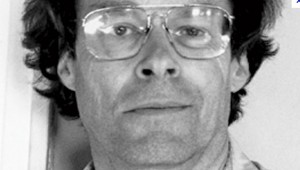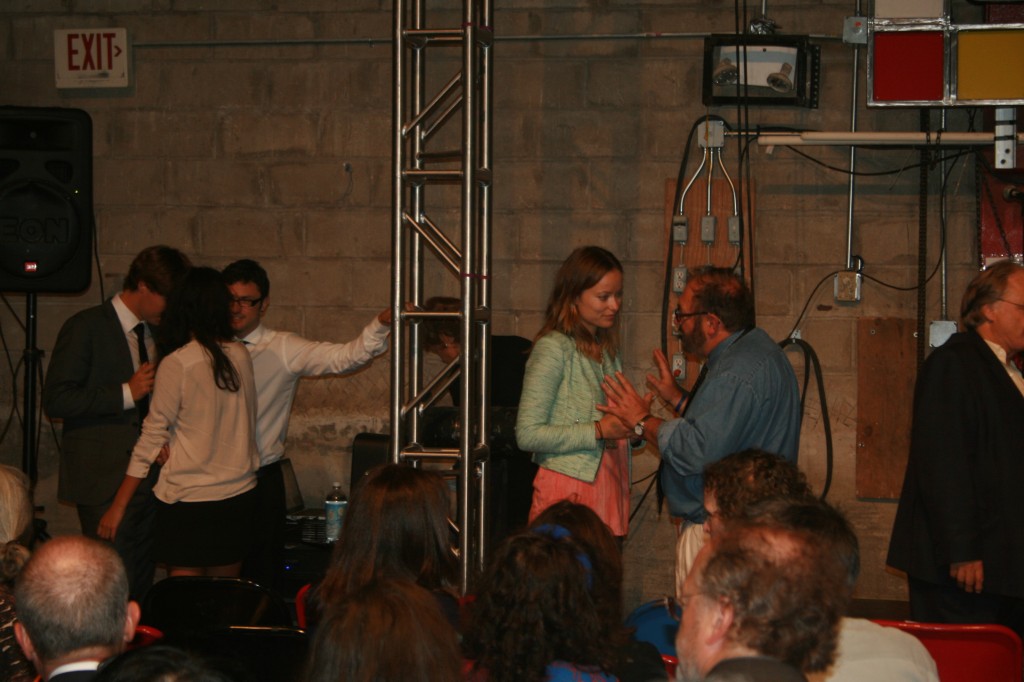Memorials have been on my mind for the last few months––ever since I missed George Stoney’s funeral and memorial. I had a good excuse––I was in Sweden teaching an intensive course and a quick return home was out of the question. Still I have felt a recurrent sense of sadness and guilt that I missed both events.  It was really because of George that I had a chance to teach some of my first courses. He had been teaching a year-long course on the Documentary Tradition but had become involved in something else, and this gave me my chance to take over (with at least his tacit approval). I taught it for a couple of years as an adjunct, and our styles proved to be quite different. His course was filled with eager undergraduate filmmaking students; when I took it over, most of them fled to be replaced by Cinema Studies graduate students. Obviously, I was grateful–-and that gratitude has only deepened with time.
It was really because of George that I had a chance to teach some of my first courses. He had been teaching a year-long course on the Documentary Tradition but had become involved in something else, and this gave me my chance to take over (with at least his tacit approval). I taught it for a couple of years as an adjunct, and our styles proved to be quite different. His course was filled with eager undergraduate filmmaking students; when I took it over, most of them fled to be replaced by Cinema Studies graduate students. Obviously, I was grateful–-and that gratitude has only deepened with time.
While the world of a New York documentary is fairly small and reasonably friendly, it has its own quite independent spheres. They overlap and intersect but not as much as one might think. New York is filled with Stoney’s disciples, some of whom have written remarkably on his life. (Judith Helfand, for instance); but my mentors were Jay Leyda, D. A. Pennebaker and Peter Davis. George and I were friendly, but we saw each other infrequently and only in passing. However, we had been running into each other more often in recent years––particularly at the IFC’s Stranger than Fiction series where he was a regular. Of course, we would always say hello and often talk for a few minutes. He’d update me on the latest film he’d completed or the one he was just starting (his quiet productivity was always dizzying). I admired the way he kept coming to the IFC even after he was in a walker.
One memorable moment came at the Visible Evidence Conference in August 12011. The reception was in George’s honor; and when handed the microphone, he mentioned that he was getting old enough so that he had become an advocate for choosing one’s time to die. I remember thinking that I hoped he would pursue his advocacy through film rather than through example, but in that respect I was perhaps naive. (People have been quiet about the exact circumstances of his death.) Certainly it didn’t seem as if his last hurrah was imminent: we talked on the phone later in the fall. A few decades ago George had shown a film that he paired with Lorentz’s The River (1937)–in which dams were shown to be a ecological problem rather than a solution. I couldn’t remember the title but George supplied it (The Flooding River, 1972) and was still in touch with the filmmaker (L.P. Brower). I paired the two films in my spring course on Documentary and the Environment.
This past weekend was filled with memorials of different kinds. Saturday, Sept 22nd, in particular.
 A one-day conference, ‘Cinema and the Legacies of Critical Theory’, International Conference in Memory of Miriam Hansen, unfurled at Columbia University’s Deutches Haus on the 22nd. Miriam and I co-chaired the Columbia Seminar on Film and Interdisciplinary Interpretation for about 10 years, and her work on Babel and Babylon coincided with my own work on early cinema. We had a warm, productive and at times even intense relationship that inevitably faded when she moved to Chicago and faded even further when she got sick and I assumed parental responsibilities. So I attended the conference and decided to take a few pictures even though I was rather indiscreet with my 35mm Canon camera compared to others with their iphones. In fact, I only took photos on Friday evening (Sept 21) at the opening “reception,” which nonetheless included a stealth panel.
A one-day conference, ‘Cinema and the Legacies of Critical Theory’, International Conference in Memory of Miriam Hansen, unfurled at Columbia University’s Deutches Haus on the 22nd. Miriam and I co-chaired the Columbia Seminar on Film and Interdisciplinary Interpretation for about 10 years, and her work on Babel and Babylon coincided with my own work on early cinema. We had a warm, productive and at times even intense relationship that inevitably faded when she moved to Chicago and faded even further when she got sick and I assumed parental responsibilities. So I attended the conference and decided to take a few pictures even though I was rather indiscreet with my 35mm Canon camera compared to others with their iphones. In fact, I only took photos on Friday evening (Sept 21) at the opening “reception,” which nonetheless included a stealth panel.

The conference brought together a range of colleagues and friends from all over the country as well as from abroad. So here are a few images.
***
 I moved to New York in 1972 when being a reader of the Village Voice was crucial to one’s identity as a New York and a free thinker. Jonas Mekas had his weekly film column and, by the time I had settled in, Alexander Cockburn had his “Press Clips”: radical art, radical politics. (New York City was a much grittier place in those days–in danger of going bankrupt.) Today’s Village Voice bears almost no resemblance to that exciting mag–and Cockburn’s assault on the media’s handling of Nixon and Vietnam were inspirational pieces that we read and discussed while working on Hearts and Minds. Alex C was a larger than life figure, and his long run at the Voice largely coincided with my 20s. A lot of people slipped back into a more conservative politics in the late 1970s and 1980s, but Cockburn was part of what prevented that from happening to me. In contrast, I wasn’t much of a reader of The Nation, so I did not follow him very regularly there.
I moved to New York in 1972 when being a reader of the Village Voice was crucial to one’s identity as a New York and a free thinker. Jonas Mekas had his weekly film column and, by the time I had settled in, Alexander Cockburn had his “Press Clips”: radical art, radical politics. (New York City was a much grittier place in those days–in danger of going bankrupt.) Today’s Village Voice bears almost no resemblance to that exciting mag–and Cockburn’s assault on the media’s handling of Nixon and Vietnam were inspirational pieces that we read and discussed while working on Hearts and Minds. Alex C was a larger than life figure, and his long run at the Voice largely coincided with my 20s. A lot of people slipped back into a more conservative politics in the late 1970s and 1980s, but Cockburn was part of what prevented that from happening to me. In contrast, I wasn’t much of a reader of The Nation, so I did not follow him very regularly there.
I came to Alex’s memorial to better understand the trajectory of his life and out of respect. I’ve known Leslie Cockburn from college where we traveled in some of the same circles, and Alex’s brother Andrew through Leslie and through film. We share friends, two of whom were there: my college roommate Warren Bierwirth and Lizzie Lennard, who tinted the photographs for Before the Nickelodeon and several covers of my books. So again I snapped a few photos to mark the event.












